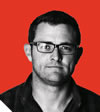Les Bleus hope to get the best out of Wesley Fofana at the World Cup, writes GAVIN MORTIMER.
Unlucky 13? It would seem so for France, who have gone through that number of centre partnerships in the three and a half years of Philippe Saint-André’s reign. In that time Les Bleus have played 39 Tests, won 16, drawn two and lost 21. Tries? They’ve scored just 66, stark proof of the decline of what used to be fondly described as ‘French flair’.
The irony is that during this barren period of creativity, France have given the world Wesley Fofana; on his day the most gifted centre in Europe. When he burst on to the international scene in the 2012 Six Nations, wizened old Frenchmen raised a glass of pastis to toast the return of Gallic panache. Shades of André Boniface, Jo Maso, Serge Blanco and Philippe Sella.
It certainly seemed that way as the then 24-year-old Fofana celebrated his introduction to international rugby with four tries in four Tests. And then inexplicably Saint-André got it into his head that Fofana was better suited to the wing. So for the next 12 months, he lingered out wide, scoring one try in seven appearances.
The France coach came to his senses in the 2013 Six Nations, restoring Fofana to centre and at once the tries returned, three in the four matches that followed as normal service was resumed.
But what Saint-André has never been able to fathom is who best to pair with Fofana.
The Clermont centre has seen seven players come and go alongside him, from club colleague Aurélien Rougerie to young pretender Gaël Fickou to Toulouse veteran Florian Fritz. The giant Toulon centre Mathieu Bastareaud has proved his most regular partner, the pair playing in 11 Tests, including the impressive victory over England in their World Cup warm-up match in Paris.
Fofana and Bastareaud go back a long way. Two Parisians in a France squad composed mostly of southern French lads (and the odd South African!). They’ve known each other since they were eight and are still great mates. It was ‘Basta’ who kept Fofana out of the French junior squads, the 125kg centre – he was that size even as a teenager – pairing up with Yann David for France U20. It was a talented squad, one that also contained Morgan Parra, Raphaël Lakafia and Yoann Maestri, who have all gone on to win caps at senior level.
Fofana was the late developer among the group. While Bastareaud won his first cap in 2009, Fofana was trying to adapt to life in Clermont, the club he’d joined the previous year. He admits he found the transition hard, moving from the sophisticated French capital to a town in the middle of nowhere where everyone knows everyone and rugby is a religion.
There was also his weight. He was 102kg when he arrived in Clermont, and it didn’t sit well on his 1.78m frame. So the first year or so was spent getting fit, and tuning into the wavelength of a professional player. Fofana has described himself as ‘nonchalant’, a man who takes in his stride with a wry smile the vagaries of life.
Once he’d shed some kilos and sharpened his attitude, he was launched on the Top 14 by Vern Cotter, the then Clermont coach who is now in charge of Scotland. The wily old Kiwi knew he had a rough diamond on his hands from the moment Fofana had arrived at the club. For a relatively small man, Fofana is deceptively powerful with a low centre of gravity and lightning feet.
‘He’s got a way of breaking tackles that others don’t have,’ explained Cotter, who also described Fofana as being equally adept at running into space as he is bursting through a tackle. What a shame Saint-André has never got the best out of Fofana. How could he, when he chops and changes his partners so frequently?
‘If there is one genius in French rugby at the moment, it’s Wesley Fofana,’ said the former France flanker Serge Betsen earlier in the year. ‘The kid is so talented and skilful, that something happens every time he gets the ball.’
A September-October World Cup is made for Fofana. The grounds will be hard and he’ll be fresh.
All he needs is that ball, to remind the world that French flair is not dead.
– This article first appeared in the October 2015 issue of SA Rugby magazine




